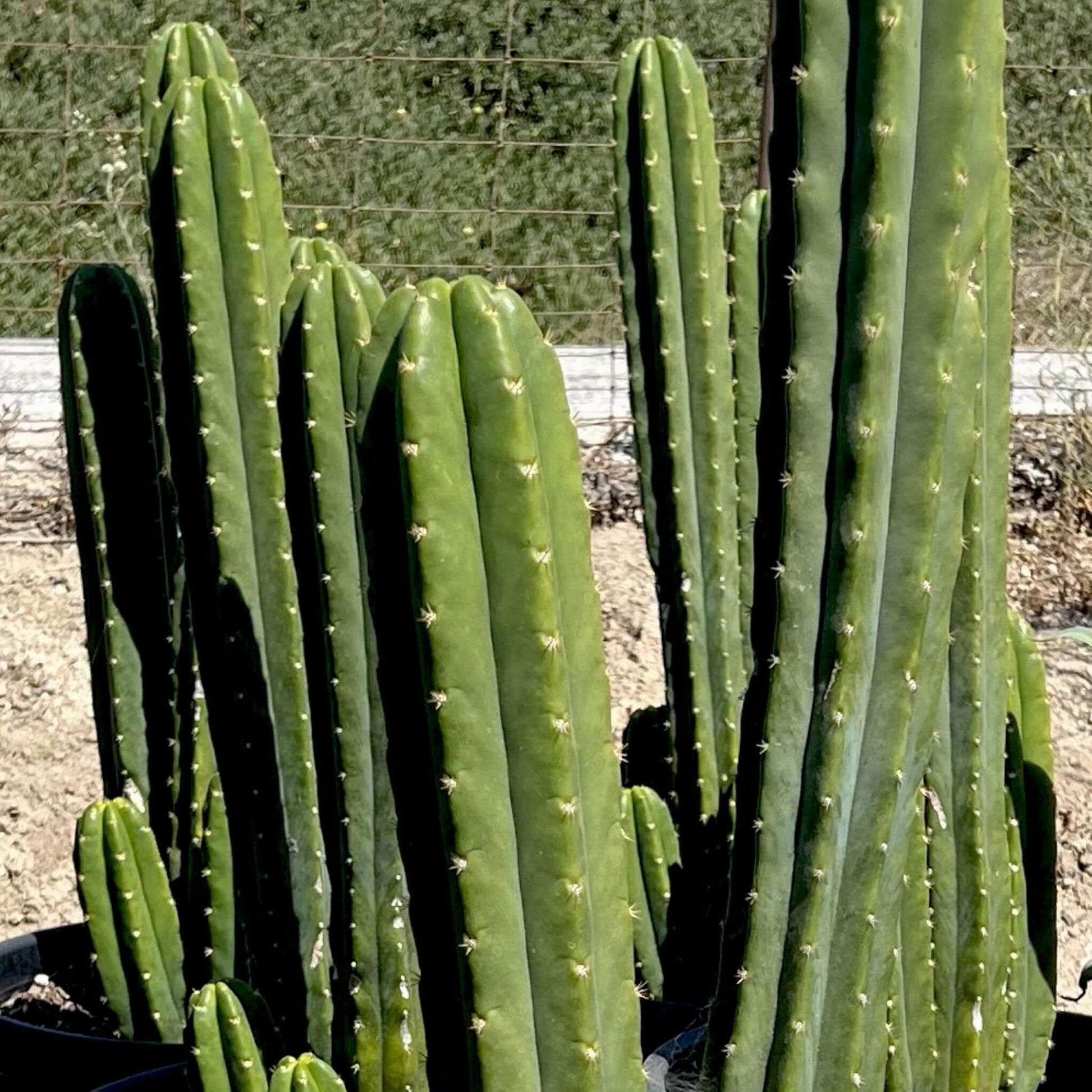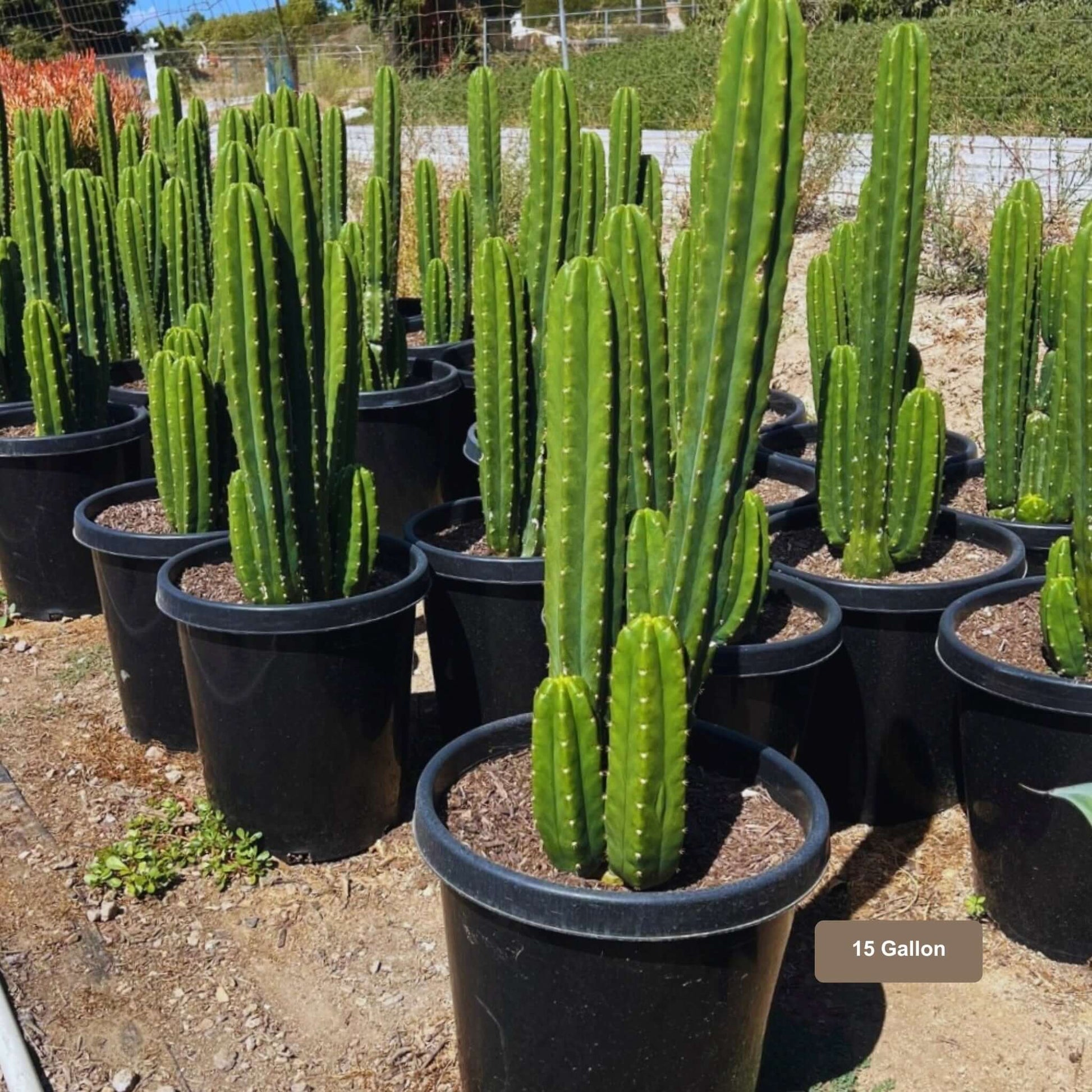
San Pedro Cactus
Echinopsis pachanoi (Trichocereus pachanoi)
Delivery
24-hour money-back guarantee
Free delivery on orders over $349
Big Project? Call 888-444-1126 for bulk rates!
The popular San Pedro Cactus (Echinopsis pachanoi) is a fast-growing, columnar cactus native to the high altitudes of the Andes Mountains. Under optimal conditions, it can grow 1-2 feet per year, eventually reaching mature heights of up to 20 feet. This remarkable cactus, with slender stems around six inches in diameter, makes a striking addition to any garden, providing both vertical interest and drought tolerance.
In July, it produces large, white, fragrant flowers that bloom at night and last for about two days, adding a stunning visual to its upright structure. Also known as Trichocereus pachanoi or Trichocereus macrogonus var. pachanoi, this versatile cactus features smooth, green-skinned stems with 5 to 8 rounded ribs and blunt tips. Over time, multiple stems will emerge from the base, creating a 6-foot-wide vertical feature in your landscape.
Unlike other columnar cacti, it has fewer and shorter spines, making it suitable for patios, walkways, and indoor containers in a sunny spot. The spines, typically 2 to 10 per areole, measure about ¾ inch long and vary in color. These spines emerge from small, greyish-white areoles, appearing as evenly spaced dots along the ribs, with distinctive V-shaped notches just above them.
How large does it grow and what is its habit?
What light and site conditions does it prefer?
What about watering, soil and general care requirements?
What pests, diseases or caution notes apply?
15-30 ft.
6 ft.
Low
Pollinators, Bees
Perfect Your Landscape With Expert Help
Customize your yard with confidence. Schedule your free consultation today and bring your outdoor space to life!



